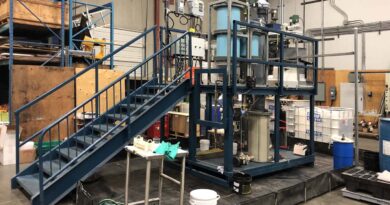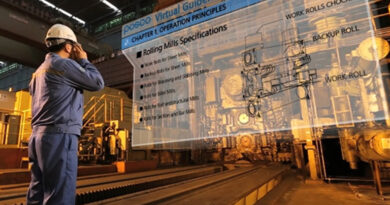Use of hydrogen in metallurgical processes
In principle, hydrogen can be applied as a reducing agent for the production of many metals. However, it is only used on a large scale for the reduction of molybdenum and tungsten oxides to the corresponding metal powders.
It has also found commercial application for the synthesis of platinum group metals, some rare metals such as germanium and rhenium, and for the production of special grades of metals (e.g., fine nickel and cobalt powders).
Hydrogen is also necessary as a reductant for the manufacture of sophisticated materials, such as nanocomposites that exhibit outstanding properties.
Using hydrogen to make iron is not a new concept. Over the last 50 years, direct reduction technologies like the MIDREX Process and ENERGIRON use a majority of hydrogen in the reducing gas (balance is mostly CO), and already offer a significant reduction in CO2 emissions.
A 400,000 tons/year Circored direct reduction plant in Trinidad uses hydrogen from a steam reformer as its reductant and energy source. The plant was started up in 1999, but the fluidized bed reactor had numerous problems and it produced only about 150,000 tons by the time it was shut down in 2001.
MIDREX H2 concept uses hydrogen input gas generated externally or integrated within the process. A gas heater is needed to heat the gas to the required operational temperature.
Hydrogen exhibits several advantages in comparison to the other reduction methods. For example, hydrogen enables the production of very pure metals by reduction of the corresponding metal oxides and also shows benefits with respect to reaction time.
Four basic reduction processes are reduction by carbon, carbon monoxide, or hydrogen; metallothermic reduction; aqueous electrolysis; and molten salt electrolysis.
Of these four possibilities, hydrogen is not used for the production of major metals such as iron, copper, and aluminium.
The extraction of very pure metals, mostly in the form of powder by a gas-solid reaction, is a great advantage of hydrogen as a reductant because no refining of the obtained metal is necessary. This is enabled by using pure compounds as raw materials and pure hydrogen for the reduction; only water vapour is liberated as a by-product.
Hydrogen as a reductant also has benefits with respect to the reaction time due to better contact between gas and solid compared to carbon reduction with solid-solid reduction behaviour. In principle, hydrogen can be generated by gasification of coal or hydrocarbons and by electrolysis of water.
No carbon dioxide will be emitted, either during the hydrogen production or during the reduction process, if the latter method is applied.
There are two major uses for hydrogen today. About half is used to produce ammonia (NH3) for use in fertilizer. The other half is used to convert heavy petroleum sources into lighter fractions suitable for use as fuels, which is known as hydrocracking.
In light of increasing concern for the greenhouse gas emissions and considering the advantages of hydrogen as a reductant, its synthesis by decomposition of water and use as reductant will possibly gain increasing importance in the future.
Hydrogen ironmaking is a real possibility for future (near) carbon-free steelmaking, but there are significant uncertainties around the availability of hydrogen in volumes needed for ironmaking and at a competitive cost.




